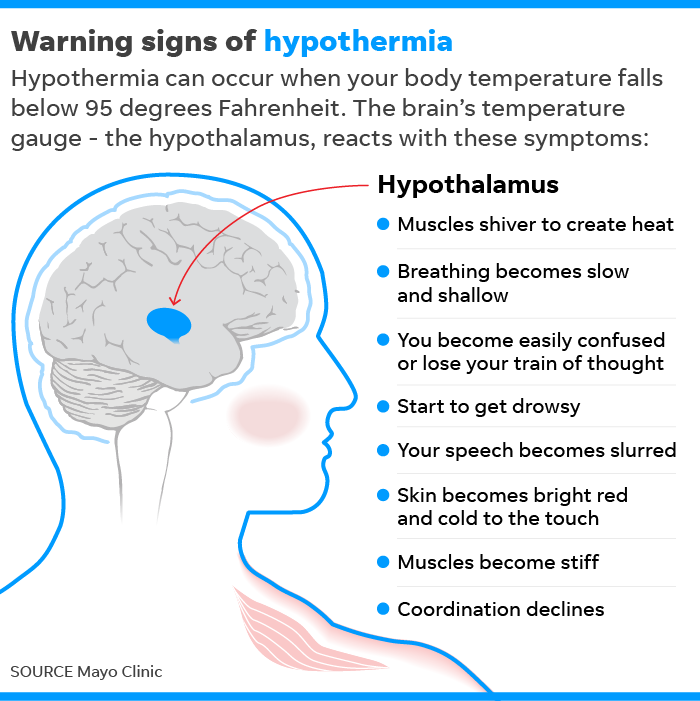Frostbite? Hypothermia? How to stay safe and warm as extreme temperatures stun the USA
 Marina Pitofsky
Marina PitofskyIf you're in the Midwest this week, you might not want to say hello to your neighbor. It's going to be so cold in parts of the country that the National Weather Service is calling on people to avoid "taking deep breaths" and "minimize talking" outside.
Wednesday is expected to be the coldest day in Chicago history as a polar vortex, or continuous blasts of cold air, descends on much of the Midwest and the South. The National Weather Service warned that the vortex will bring below-zero temperatures to a quarter of the continental U.S.
What can you do to stay warm on your way to work or at home? USA TODAY breaks it down:
Dress for the weather
The most important step you can take to guard against the cold is choosing a weather-appropriate outfit, according to Tom Kines, a senior meteorologist at AccuWeather.
"I think the Number 1 thing to keep in mind is that you've got to keep your whole body covered up when it gets brutally cold," Kines said. "That means hands, ears, necks and your face. It's just as easy to get frostbite on your ears."
Kines also said dressing in layers is key to staying warm and that mittens will keep your hands warmer than gloves.
"It's always best to dress in layers as opposed to one big coat," Kines said. "When you dress in layers, the air between each of those layers will heat up with your body heat to keep you warm."
You should also wear loose clothing instead of tight options, which can restrict blood flow in the body and make you colder. To guard against chapped lips, you should opt for lip balm with shea butter or coconut oil. These can limit the effects of dry, freezing air, according to The Muncie Journal.
Getting to school and work
Everyone should try to stay inside this week, according to Hines, even if that means working or completing class assignments from home.
"If you absolutely have to (be outside), the less you can be out in the cold, the less you're going to risk frostbite," Hines said.
If you use public transit to commute, Hines said to keep moving at bus and metro stops by pacing or jumping up and down. If you drive, make sure you have a flashlight with fresh batteries in your car, as well as a full tank of gas.
ACDelco, a General Motors' automotive parts brand, told The Detroit Free Press that you should also check your wiper blades if you are planning on driving in the cold. If the blades leave streaks or squeak when you use them, it's time to invest in a new pair for your front and back windshields.
Know the signs of hypothermia and frostbite
Author and journalist Thomas Kostigan told USA TODAY you should be ready to recognize the signs of cold-related conditions such as hypothermia and frostbite. Even if you are inside, if you notice your skin turning blue or gray, or you experience extreme fatigue and shivering, you should warm up right away.
It can take less than 15 minutes for the first signs of hypothermia and frostbite to set in, according to Hines.
"You don't have to be outside very long for frostbite to take over," Hines said. "It's a very dangerous air mass. It's an air mass that means business."

Keeping your home safe
There are also a few key steps you can take to keep your home safe in the winter weather, according to Kostigan. You should keep your thermostat at 68 degrees to conserve fuel, just in case low temperatures "last longer than expected."
If you are using space heaters to keep warm, keep them several feet away from furniture, curtains and drapes to avoid creating a fire hazard.
According to Consumers Energy, a Michigan-based public utility company, carbon monoxide poisonings are "most prevalent in the winter" when people use furnaces with windows and doors closed. Make sure you have audible carbon monoxide alarms installed throughout your house. If you already have alarms, make sure they have fresh batteries.
Contributing: Doyle Rice and John Bacon, USA Today; The Muncie Journal; The Detroit Free Press